ESA's Archive
Thank you for checking out ESA's archived files. While some of the articles may not be as relevant today as when first posted, we wanted to share a little of our history with you. Feel free to browse our articles below.

Thank you for checking out ESA's archived files. While some of the articles may not be as relevant today as when first posted, we wanted to share a little of our history with you. Feel free to browse our articles below.
Treatment Plan Example
ESA has many years of experience successfully managing invasive plants, such as Japanese stilt grass (Microstegium vimineum), small carpetgrass (Arthraxon hispidus), mile-a-minute (Persicaria perfoliata), and common reed (Phragmites australis), while protecting and restoring desirable native species. This is a multi-step process which starts with a treatment plan.
The specialized treatment plan that ESA prepares for each site includes location, species, size and density of invasive plants, and methods of control. This plan may also include a planting plan if deemed necessary to prevent invasive re-establishment.

Treated mile-a-minute along the Patuxent River at a Laurel, MD project site
After proposing a treatment plan, ESA applies for a Toxic Materials Permit from MDE if the site requires herbicides. Typically, multiple herbicide treatments or phases are needed to control invasive plants until either the root stock has completely died or the seed source in the soil is depleted. Other situations allow for hand-pulling or management with cutting or mowing.
Before treatment begins, ESA documents existing conditions for post treatment comparison. Any herbicide treatment is recorded in ESA’s log book, and an evaluation of results are provided when treatment is complete.
Treated common reed at a Laurel, MD project site
ESA is excited to continue restoring and protecting native plant communities. Please contact us today to discuss how we can help protect and enhance your natural area resources.
Environmental Systems Analysis, Inc. (ESA) is pleased to announce our recent certification as a Minority Business Enterprise (MBE/DBE/SBE) by Maryland Department of Transportation and a Woman-Owned Small Business (WOSB) with the U.S. Small Business Administration. As an MBE and WOSB, we now offer our clients an opportunity to fulfill minority business participation contracting goals for a host of government clients.
ESA is a full-service environmental consulting firm that has provided natural resource management and ecological restoration services in the mid-Atlantic region since 1989. We have a strong record of performance serving federal, state, and local government clients, including the Navy, Army, Maryland State Highway Administration, Anne Arundel County, Baltimore County, City of Annapolis, City of Greenbelt, Fairfax County Park Authority, Arlington County, and Pennsylvania Department of Military and Veteran Affairs.
ESA is a proven performer in the municipal, state, and federal marketplace. As a MBE/DBE/SBE and WOSB, we now offer our clients an opportunity to fulfill contracting goals such as requirements related to the 8(m) Woman-Owned Small Business Program. Please contact Molly Ratz (410.267.0495 x 206 – mratz@esatoday.com) or Dave Knorr (410.267.0495 x 202; dknorr@esastoday.com) to discuss our capabilities and how we may be able to support your organization.

Bloodroot (Sanguinaria canadensis)
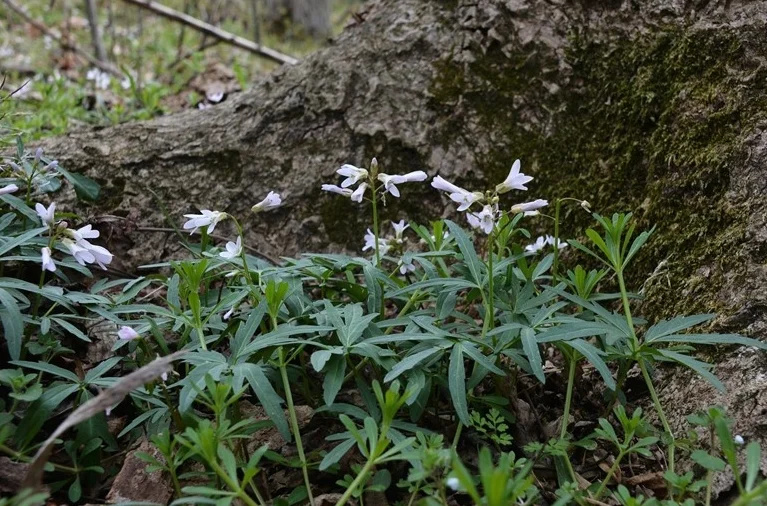
Cutleaf Toothwort(Cardamine concatenata)

Virginia Pennywort (Obolaria virginica)

A Dew Covered Spiderweb

Virginia Bluebells (Mertensia virginica)

Virginia Waterleaf (Hydrophyllum virginianum)

Highbush Blueberry (Vaccinium corymbosum)

Cardinalis cardinalis nestlings at ESA
All of us at ESA love sharing our first glimpse of spring, from the first budding flower to the croak of a spring peeper. But few things evoke the merriment of spring like a nesting bird. This year, the birds have come to us!

Setophaga striata
Photo Source: Greg Lasley/VIREO http://www.audubon.org/bird-guide
A Blackpoll Warbler (Setophaga striata) was spotted right outside our office. A migrant in the Chesapeake Bay region, they winter in South America and breed in the boreal forests of Canada and Alaska. They only weight half an ounce and have one of the highest pitched songs of the bird species. In the fall, some fly directly from New England to Puerto Rico, averaging 1,800 miles over water with no stops. A flight that takes up to 88 hours, impressive!
Then, just outside two of our office windows, a mere 20 feet apart, settled a northern cardinal (Cardinalis cardinalis) family and an American robin (Turdus migratorius) family.
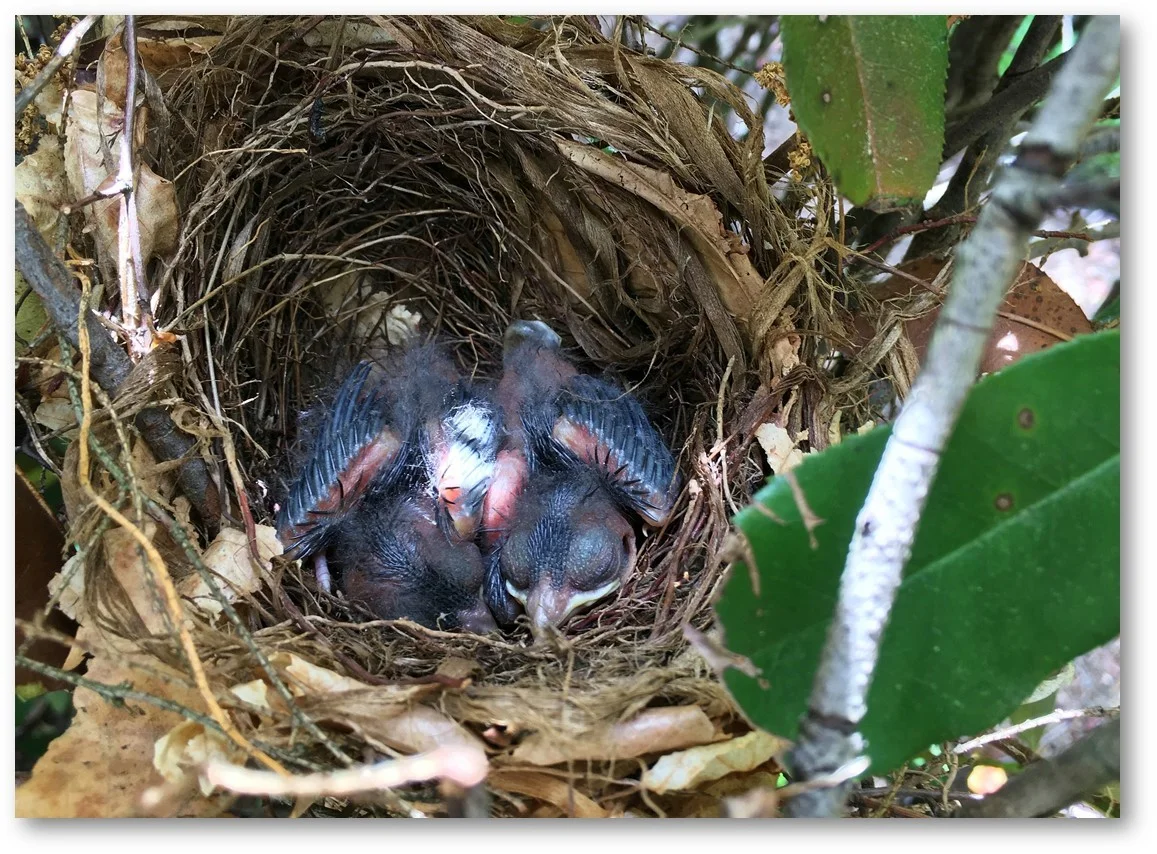
Cardinalis cardinalis nestlings at ESA
The northern cardinal is a native year-round resident to the eastern U.S. with both parents feeding their nestlings until they leave the nest about 9-11 days after hatching. The males will feed fledglings while females begin the next nesting attempt with about 2-3 broods per year. Males sing to defend nesting territory while females sing mainly in the spring before the start of nesting. Atypical for any bird, the female will occasionally sing on the nest, thought to be telling the male when to bring in food for the young. Since cardinals can live upward of 15 years we hope these nestlings live a long and adventurous life!

Turdus migratorius
Photo Source: Claude Nadeau/Vireo http://www.audubon.org/bird-guide
The American robin is common throughout North America where it varies its meals throughout the day. In the morning, they prefer earthworms and in the afternoon they prefer fruit. The entire population turns over on average every 6 years, but some can live to be almost 14 years old. We hope our nestlings will live longer than the average! We eagerly await a glimpse of the robin’s eggs and nestlings. If we’re able to capture a glimpse we will be sure to post it!
Since ESA is often in the field we are very aware of the threat of Lyme disease and the prevalence this predominantly tick spread disease is in the Northeast. Lyme disease is the most common tick-born disease in Maryland and the United States and if left untreated could progress to involve joints, the nervous system, and the cardiac system. Here at ESA we do our best to be proactive in prevention as well as in locating ticks within the 24-hour period they need to be attached to transmit the disease. But perhaps ESA should consider adopting a pet opossum.
Research was conducted at the Cary Institute of Ecosystem Studies in Millbrook, Illinois in regards to Lyme disease and if certain mammals are resistant to ticks. Different species were placed into cages and covered with ticks. It was discovered that opossums eat or remove approximately 96% of ticks that land on them. For those few ticks remaining, an opossum was less likely to acquire the disease. This can be revolutionary and more research is being conducted to determine why they are resistant. Until then we are thinking of obtaining an office pet.

White-tailed deer (Odocoileus virginianus) are monitored while choosing their meal preference
Credit: Penn State
With the decline of natural predators, the population of white-tailed deer has exceeded historic levels and resulted in unprecedented browsing impacts to wild native flora.
A recent study published in the journal Biological Invasions entitled "Deer feeding selectivity for invasive plants" further expands our understanding in the role that deer play in non-native plant population dynamics.
The study documented the feeding preferences of eight mature does without fawns through three seasons; late summer, early autumn, and spring. 15 plant species were arranged in containers, and offered to deer so that they may browse among them. Game cameras were set along the study area, and were set to photograph when triggered by movement and inferred heat signatures. This allowed researchers to observe and measure the amount of biomass per plant species that deer consumed.
Based on this study, researchers found that deer had a taste for specific species and avoided others. Among the species deer actively avoided were non-native Japanese stiltgrass, Japanese barberry, and garlic mustard. They were also found to avoid the native hay-scented fern, which is regarded as a “native invader”.
Through the avoidance of these invasive species, deer are supplying a competitive advantage to undamaged invasive species which may contribute to their ability to aggressively spread. On the other hand, other invasive plants such as Oriental bittersweet, European privet, and Morrow`s honeysuckle were all found to be especially appetizing to deer, so deer may be suppressing the spread of these species.
Additional research may shed new understanding of how these plant-animal interactions further propagate through the ecosystem, as seed viability after digestion has not yet been fully investigated. Preference for invasive species could actually be bad news if seeds survive digestion and are able to disperse further distances via deer droppings. Regardless, ESA will keep an eye out for what researchers discover next on how to suppress non-native invasive plants.
The Maryland Department of Natural Resources (MD DNR) officially recognizes 607 species and subspecies as endangered, threatened, in need of conservation, or endangered extirpated in Maryland which are often referred to as Rate, Threatened or Endangered (RTE) species. While out on a stream restoration site in Glen Burnie, MD, Dave noticed a potential RTE. The 45-foot by 20-foot aggregate of Giant Cane Arundinaria gigantea (FACW) was indeed a Maryland State Rare (S2) grass species. A native bamboo species to Maryland, this plant has 144 records on file with Maryland Biodiversity, with occurrences in seven counties, all but two within the coastal plain.

This wasn’t the first time ESA spotted this species. Previously Dave and Mark saw the plant on a job site in Fort Meade, Maryland along a tributary of the Little Patuxent River. Giant Cane is a woody perennial with hard, tough rhizomes, forming open to dense colonies. The species spreads by creeping branched rhizomes as well as floating rhizome segments that spread by water current to new locations. Maryland is the upper extent of this southern species as it may die from sub-zero temperatures. Individual canes have an estimated life span of 10-years, and may only flower once every 40-years.


Keep an eye out for RTEs. If you think you have spotted one, contact MD DNR by filling out the Rare Species Reporting Form at the bottom of DNR’s RTE website. More than 500 species and subspecies have become extinct since the 1600’s, you can help play a part in preserving rare, threatened or endangered species!

ESA designed, obtained all Federal, State and local permits, and solicited construction contractors for a compensatory wetland mitigation project on an active beef cattle farm in Howard County.
The site, located in the Maryland Piedmont, contained emergent wetlands (PEM) and a perennial stream (R2). Working with the landowner, we developed a plan that removed a portion of pasture that had always been problematic and created a wetland to intercept seasonal high groundwater. Our design included agricultural best management practices consisting of riparian plantings of a Use Class III naturally reproducing trout stream (in order to provide thermal closure over the perennial stream), electric fencing, reinforced cattle stream crossing (a concrete ford), pasture rotation cells, and water troughs.
The project was constructed in 2017 and now the created wetland is near saturated for much of the growing season. The project is in its first year of a Maryland Department of the Environment and U.S. Army Corps of Engineers, 5-year performance maintenance and monitoring phase, which ESA is performing.

While performing our monitoring site visit, Holstein cows visited our crew, separated from the wetland mitigation area by high tension electrical fencing.
Dominant herbaceous species included redtop, rice cutgrass, broad-leaved cattail, bulrush, jewelweed, soft rush and woolgrass. The two aspect dominant plants for mid-August included the non-native water mint and Southern Agrimony (Agrimonia parviflora). The most successful planted tree species is sycamore.
See below for a gallery of plants we found on site:
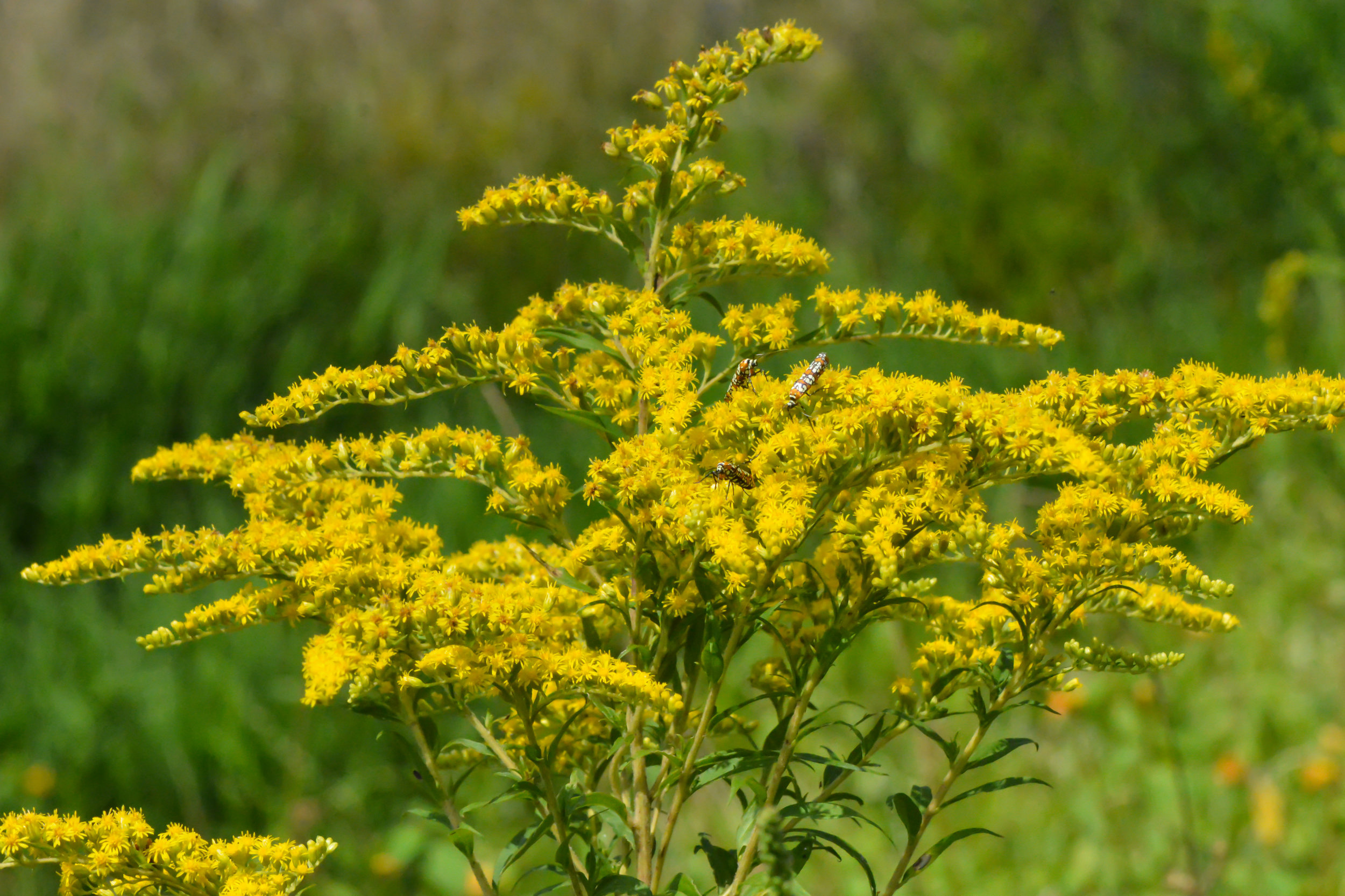
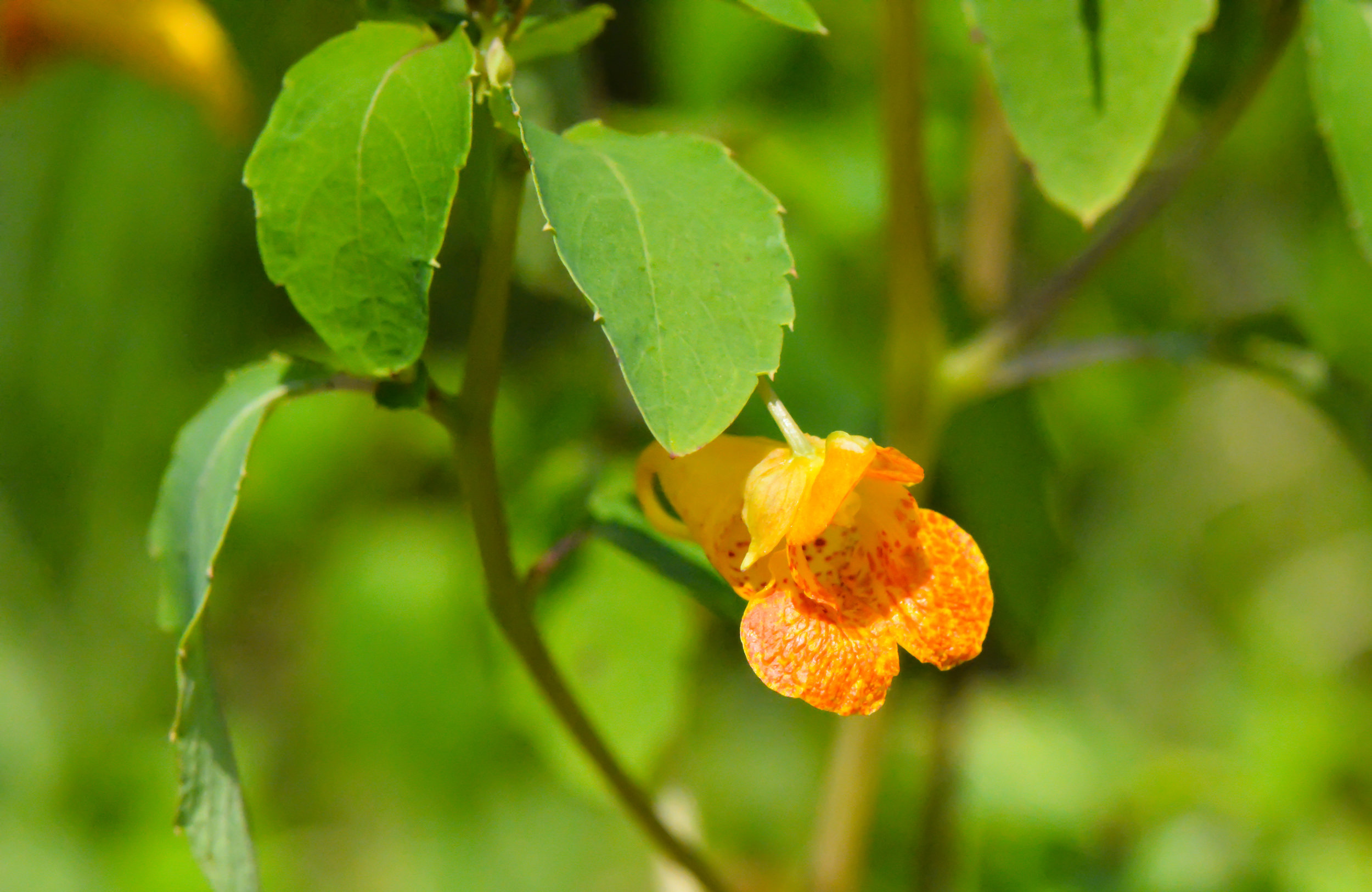
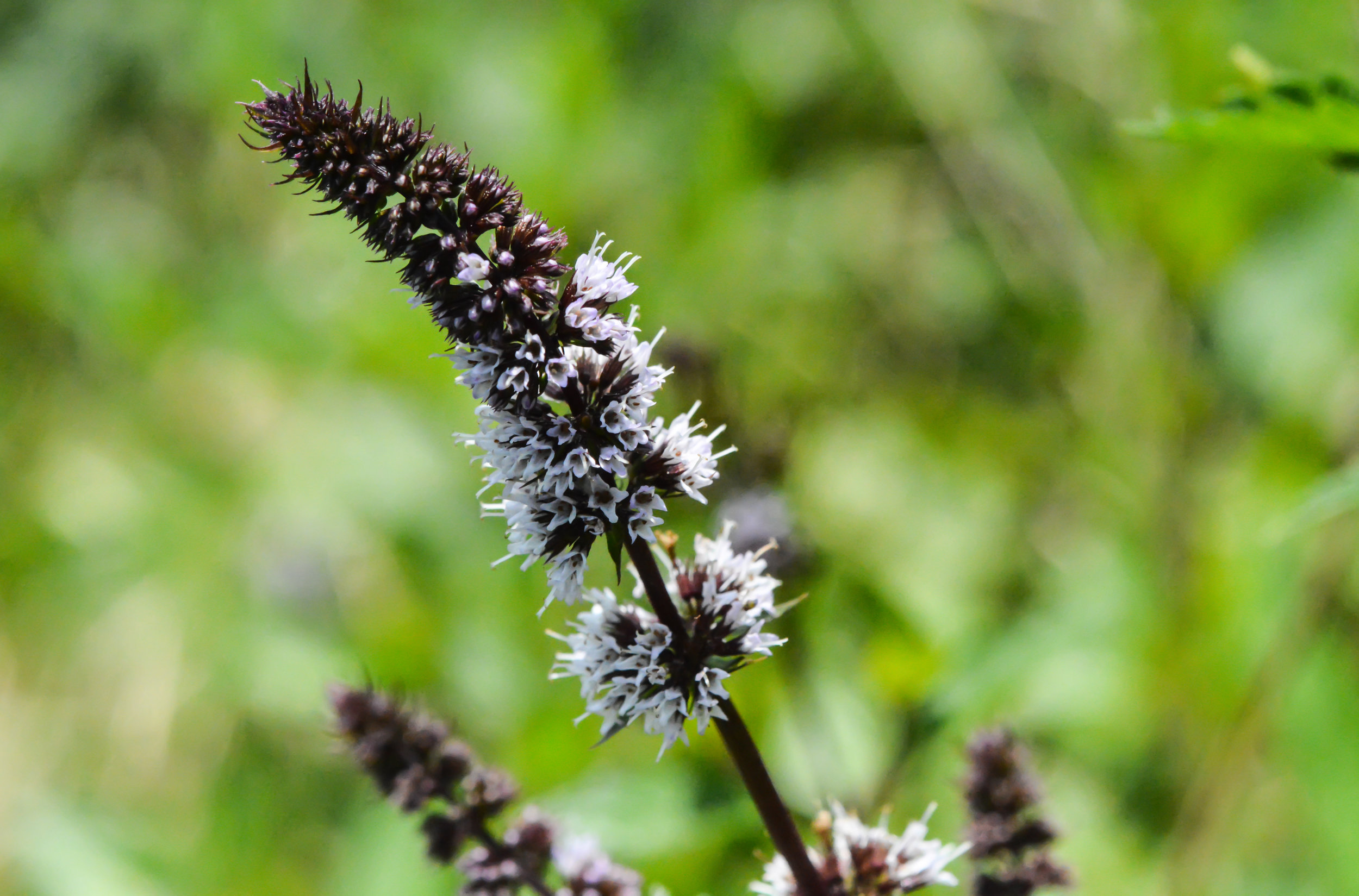
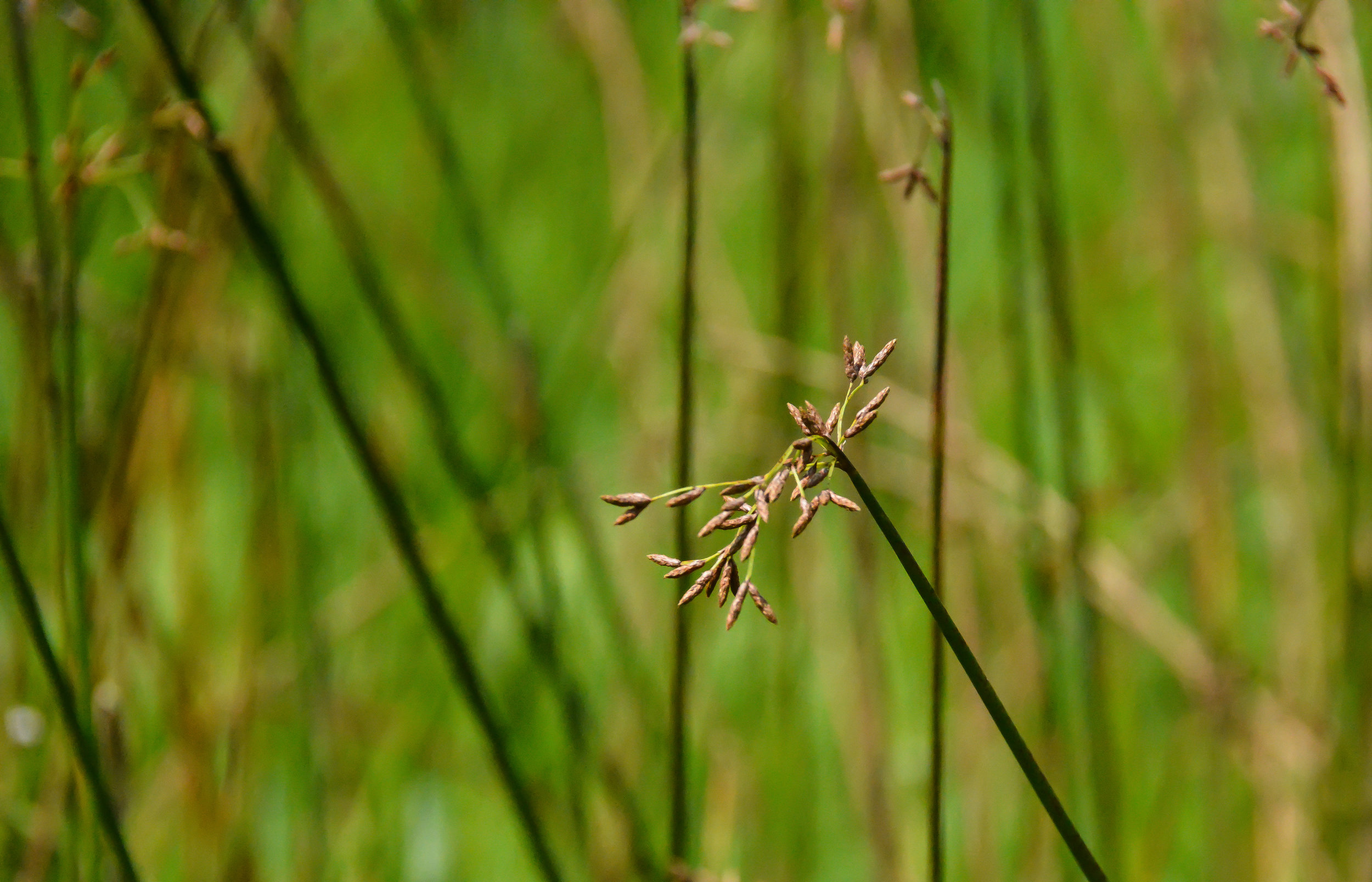
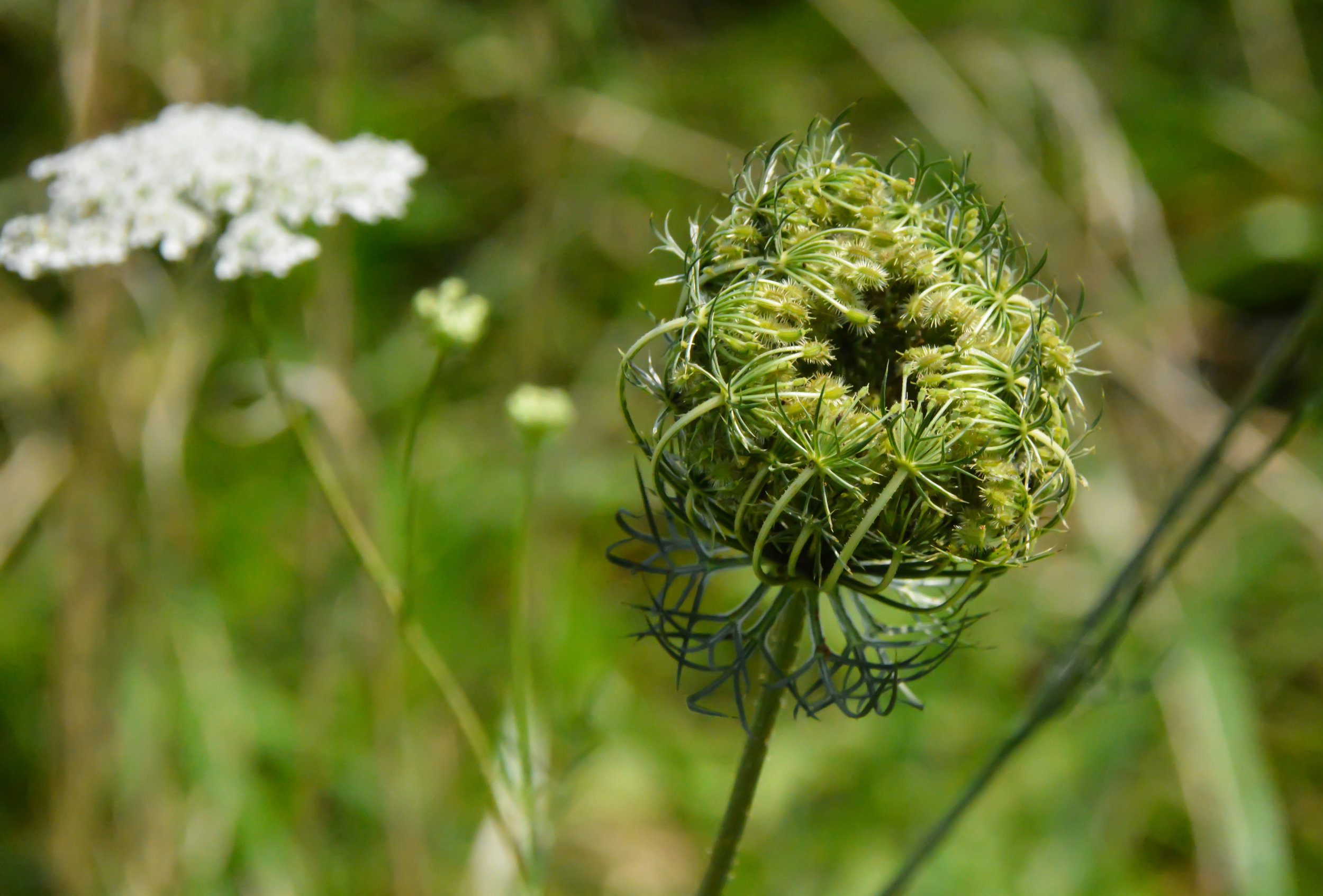
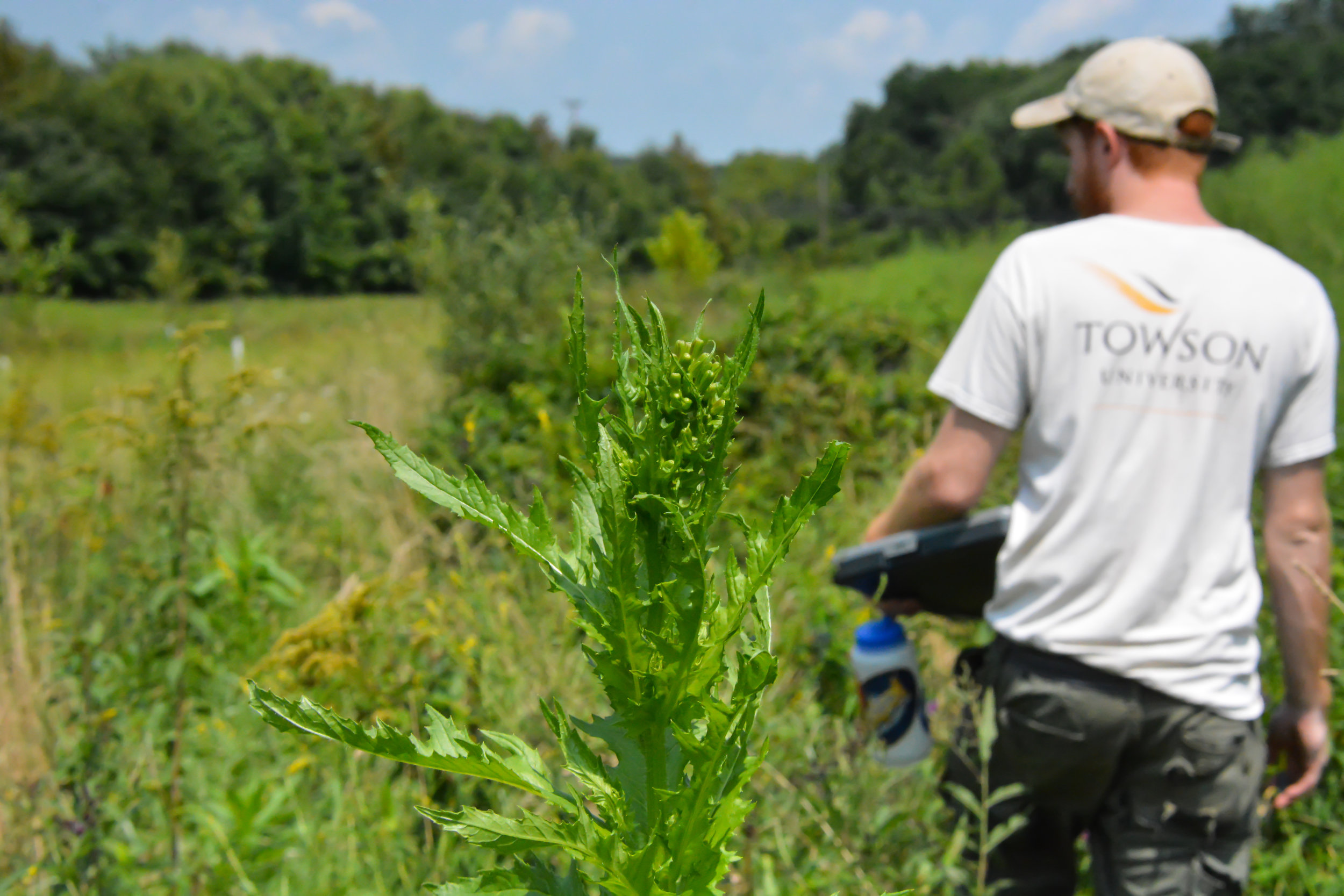

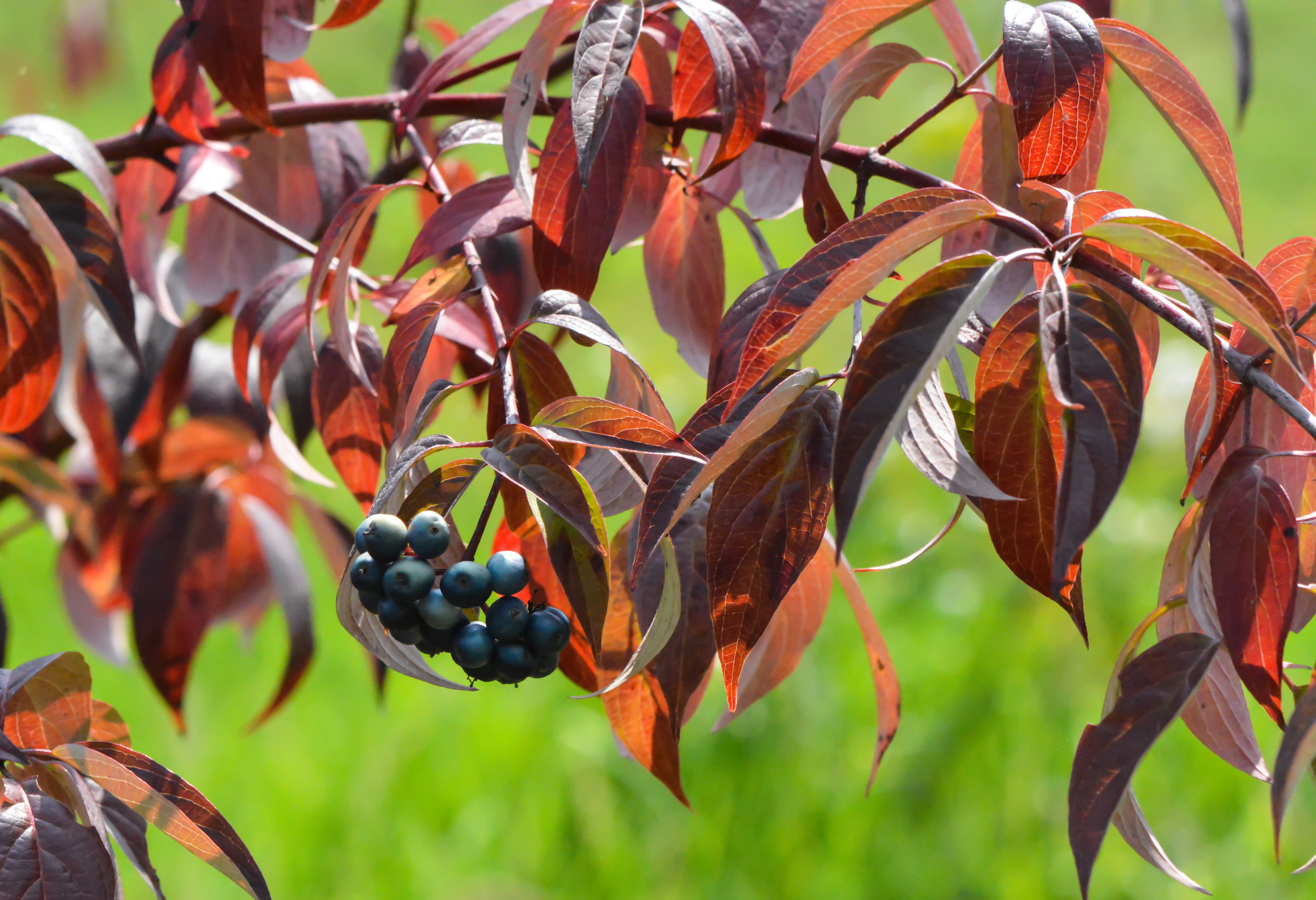


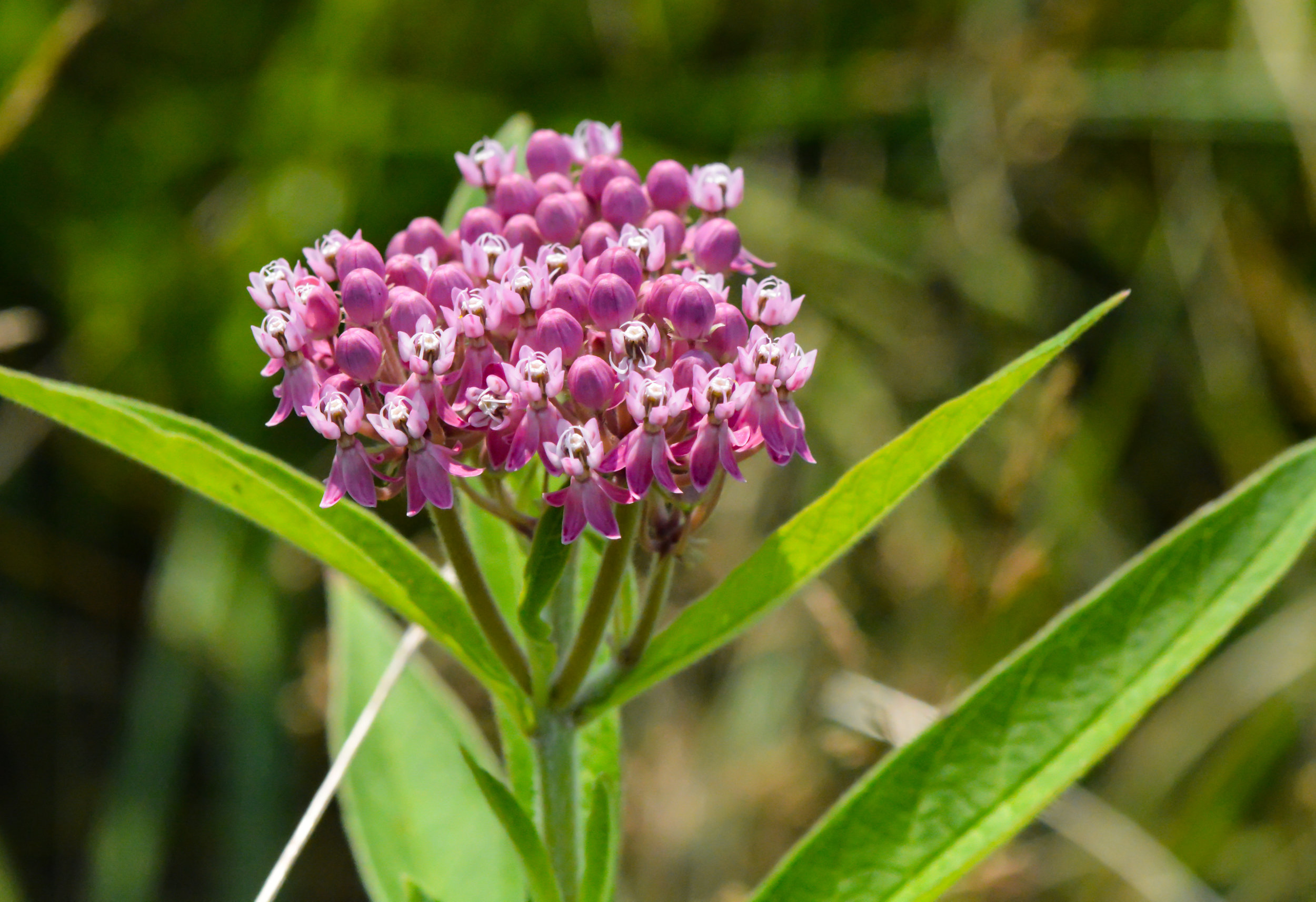
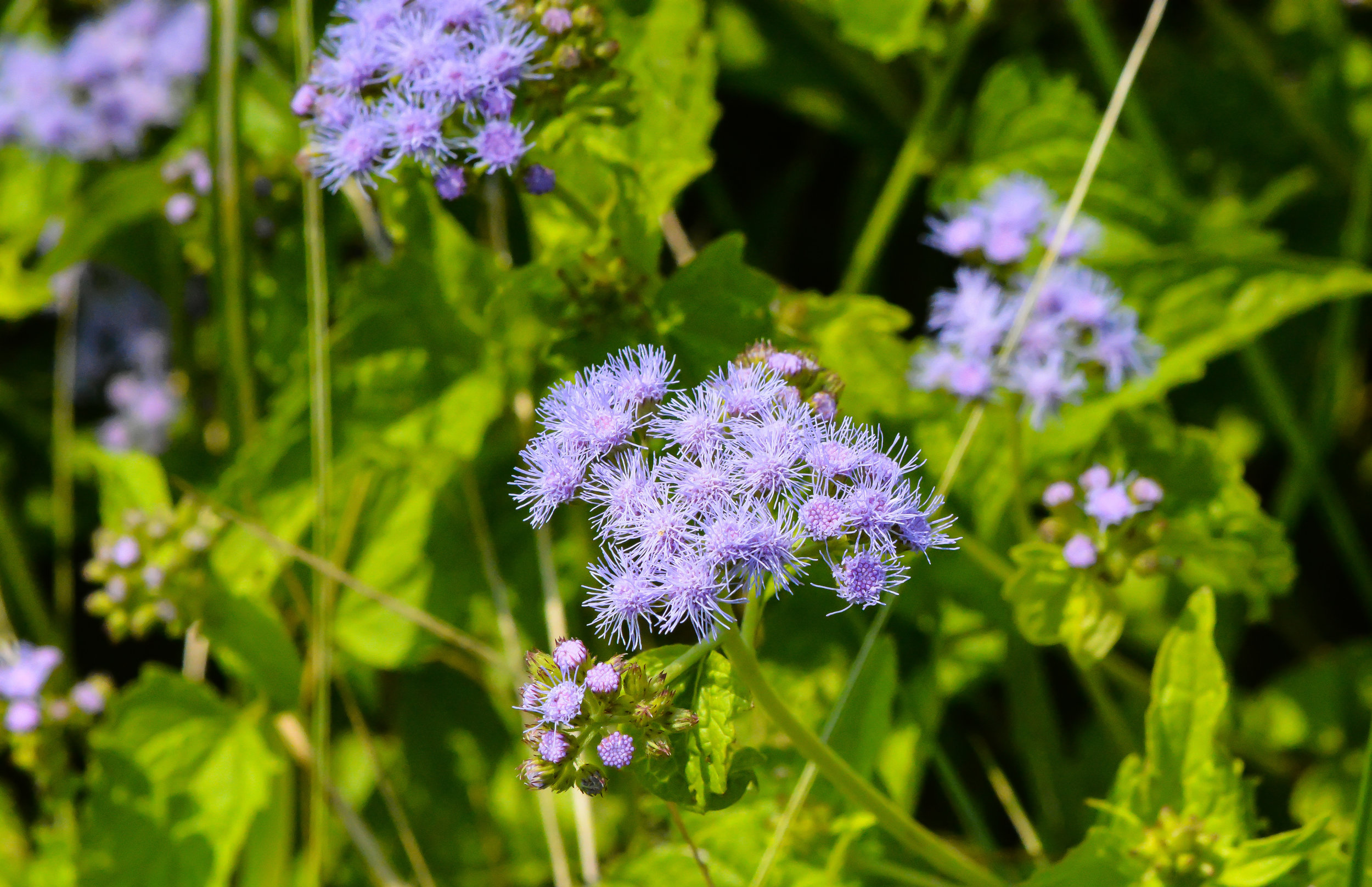
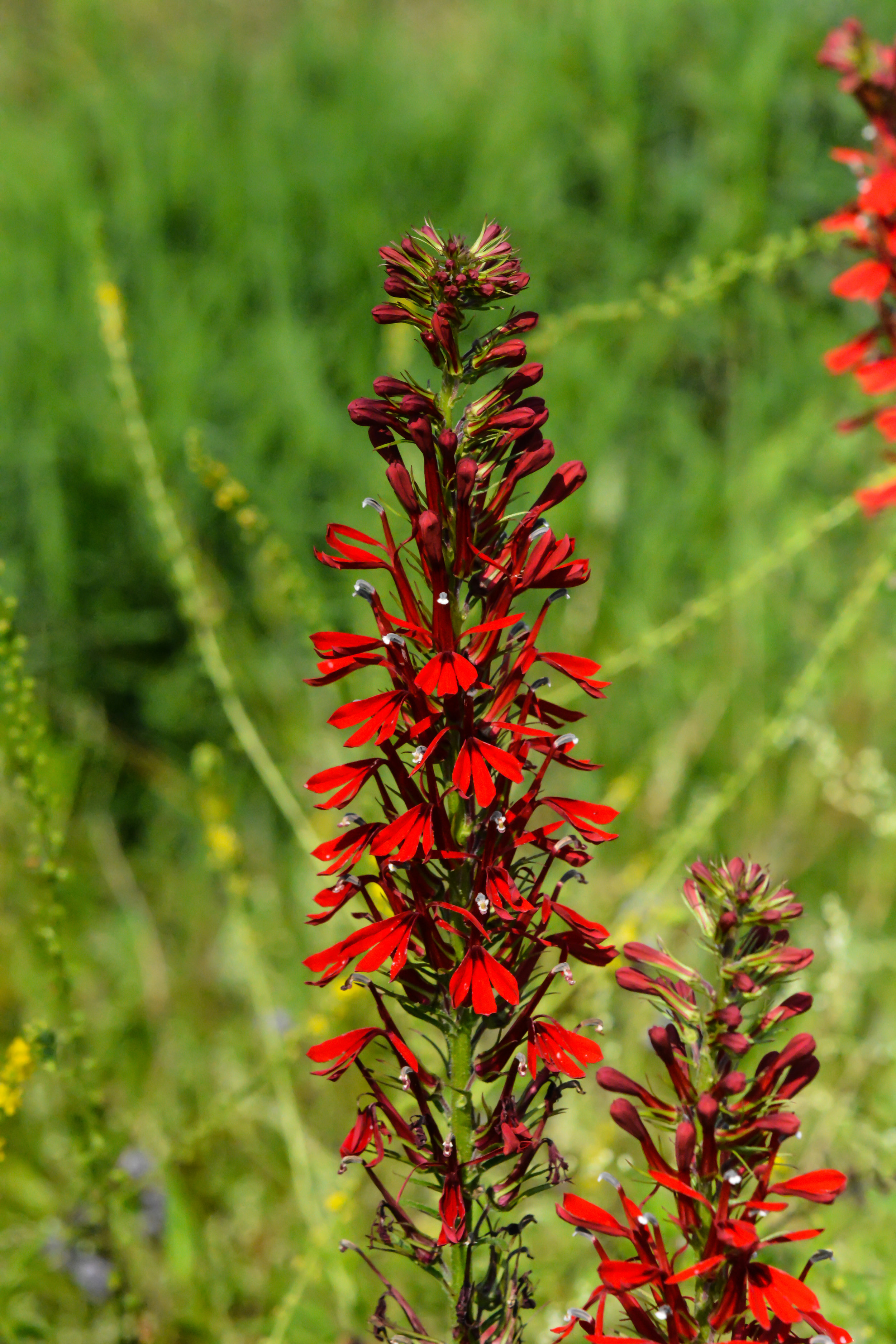
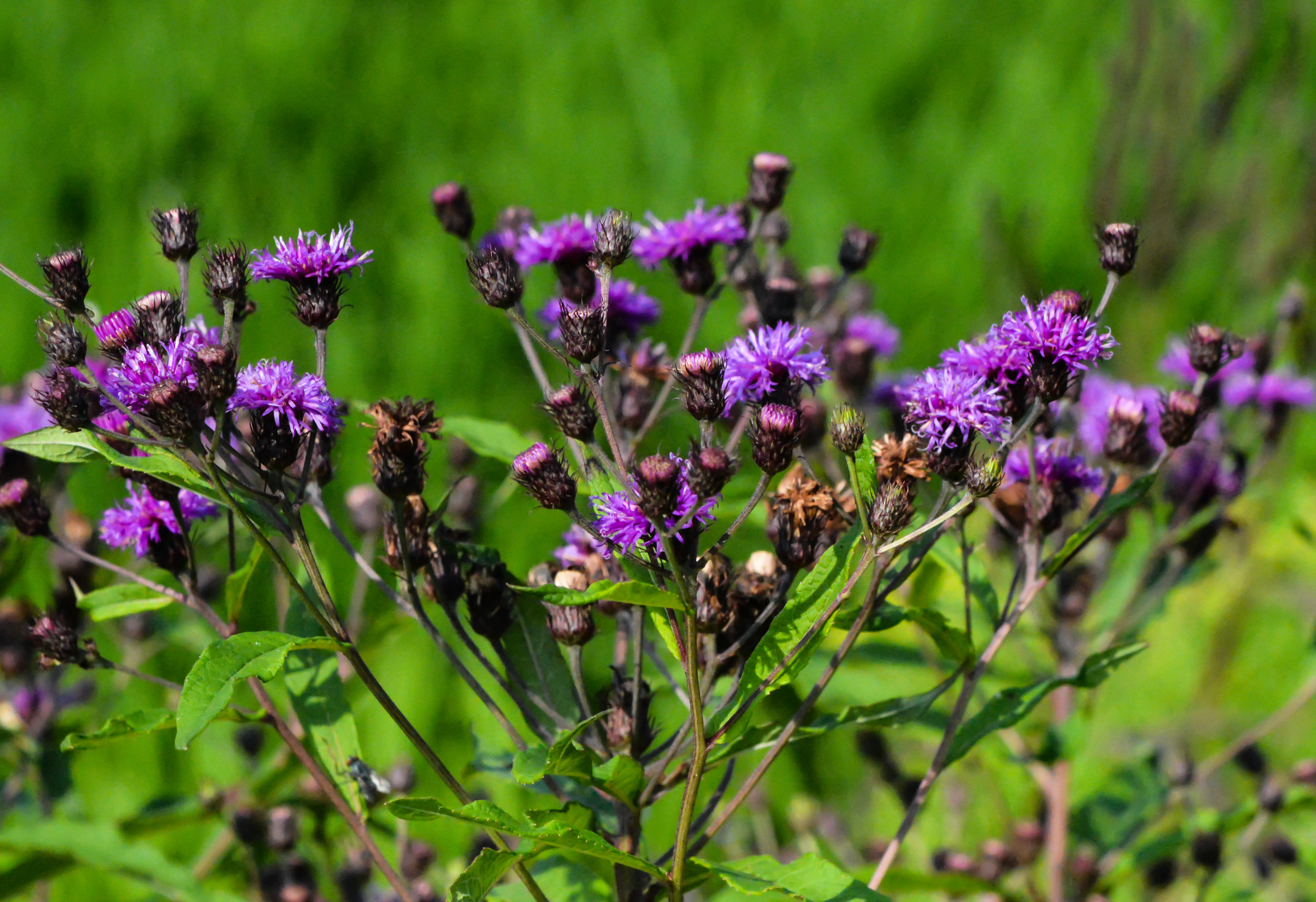
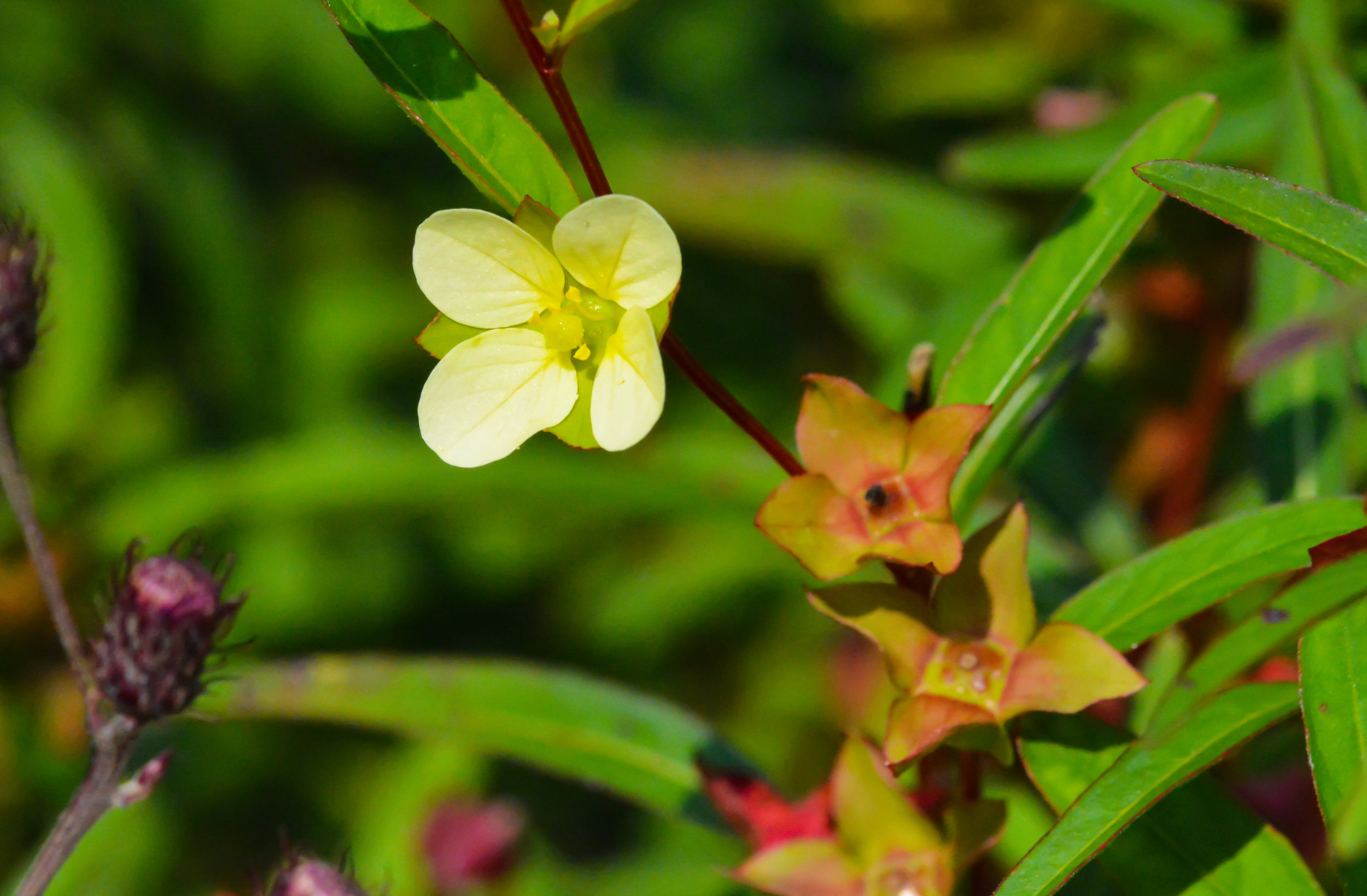

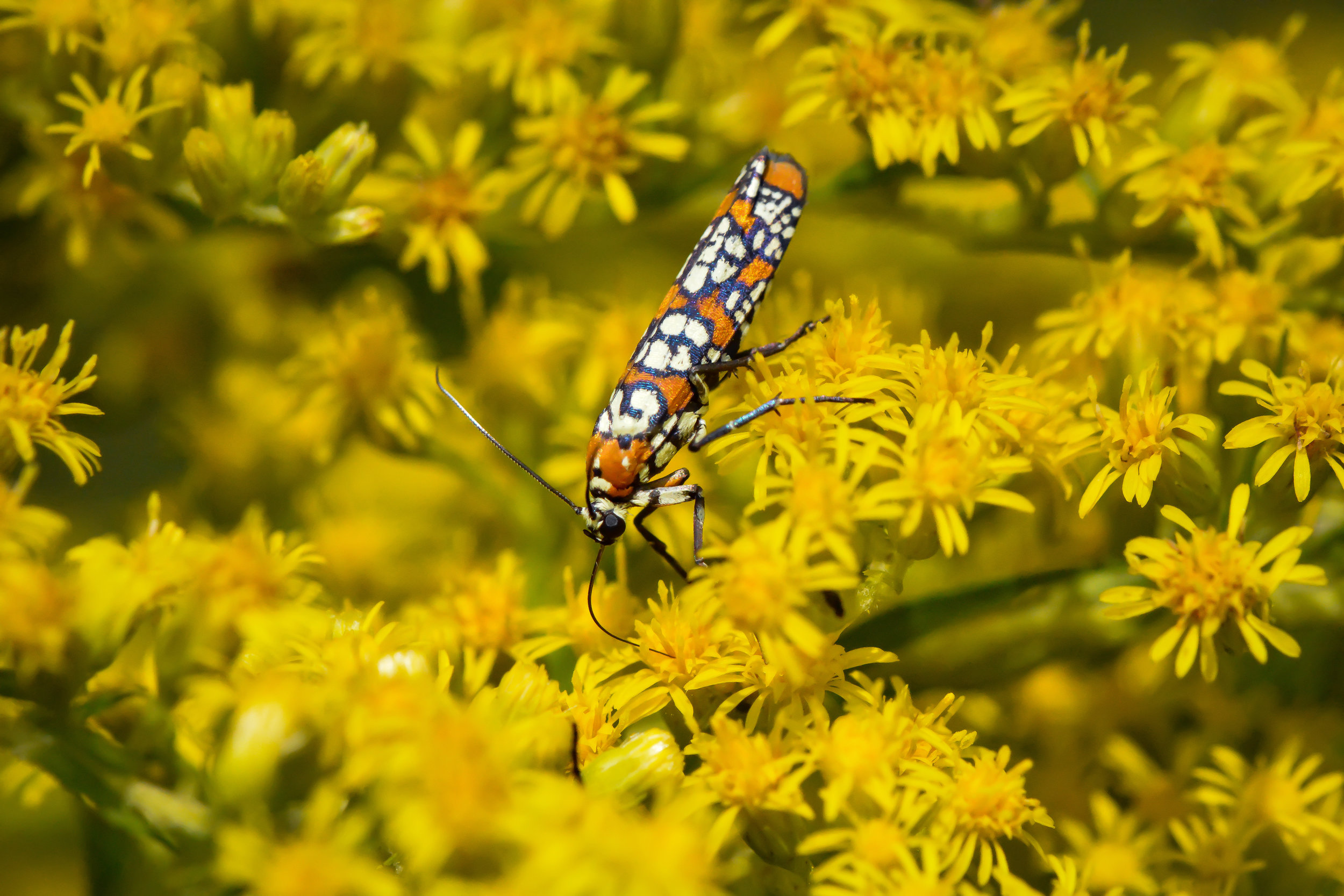
Other than the loss of a few trees, the site is performing very well, and the on-coming wetland wildflowers were a treat to observe. We look forward to 4 more years of monitoring another successful wetland creation!
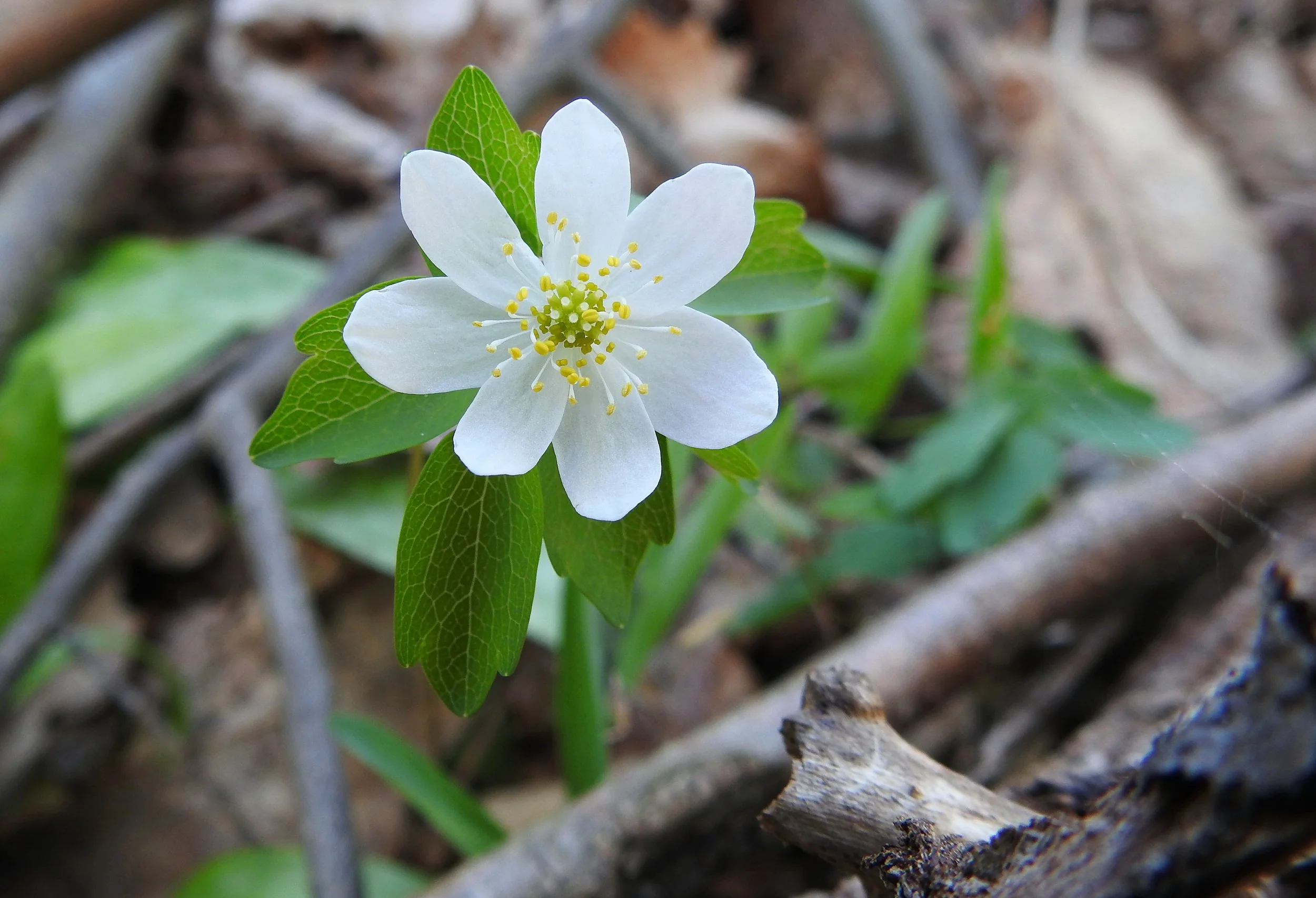
Rue Anemone (Thalictrum thalictroides)
In an article entitled First Flowering Dates for Spring Blooming Plants of the Washington DC Area, Stan Shelter and Susan Wiser of the Smithsonian Institution performed a thirteen year study of spring blooming plants within an approximate 35 mile radius between Baltimore and Washington. Shelter and Wiser specialize in Phenology, the study of natural cycles in biology and their relation to climate. They found that the regular flowering season in central Maryland begins in late February and early March. When evaluating all observed plants (over 1000 species) in the study, alien plants (not native to the United States) accounted for 25% of the plants observed. In general, native species begin to bloom in late February. In mid to late March the number of species coming into bloom increases sharply. This rate continues to increase until late April when the number of first flowering plants reaches a peak. The level then drops off through late May.
The main reason so many plants flower in mid to late April is that they are woodland spring ephemerals (meaning ‘short-lived’) which must complete large parts of their life cycles before the trees have finished leafing out. The study reaffirms the long held contention that species whose flowering is primarily governed by day-length will show the least year-to-year variability in first flowering dates, while those species whose flowering is governed more by climate conditions will show the most year-to-year variability. When you look at the article’s bell curve of flowering times, it becomes obvious that we must all take weekend hikes during April through May, especially into wetland and bottomland areas and slopes of mature forests which have some of the highest overall wildflower diversity.
One of the reasons we love what we do is the chance to get out in the field and observe wildlife. Recently, Mark was able to do just that on a job site in Laurel, Maryland.

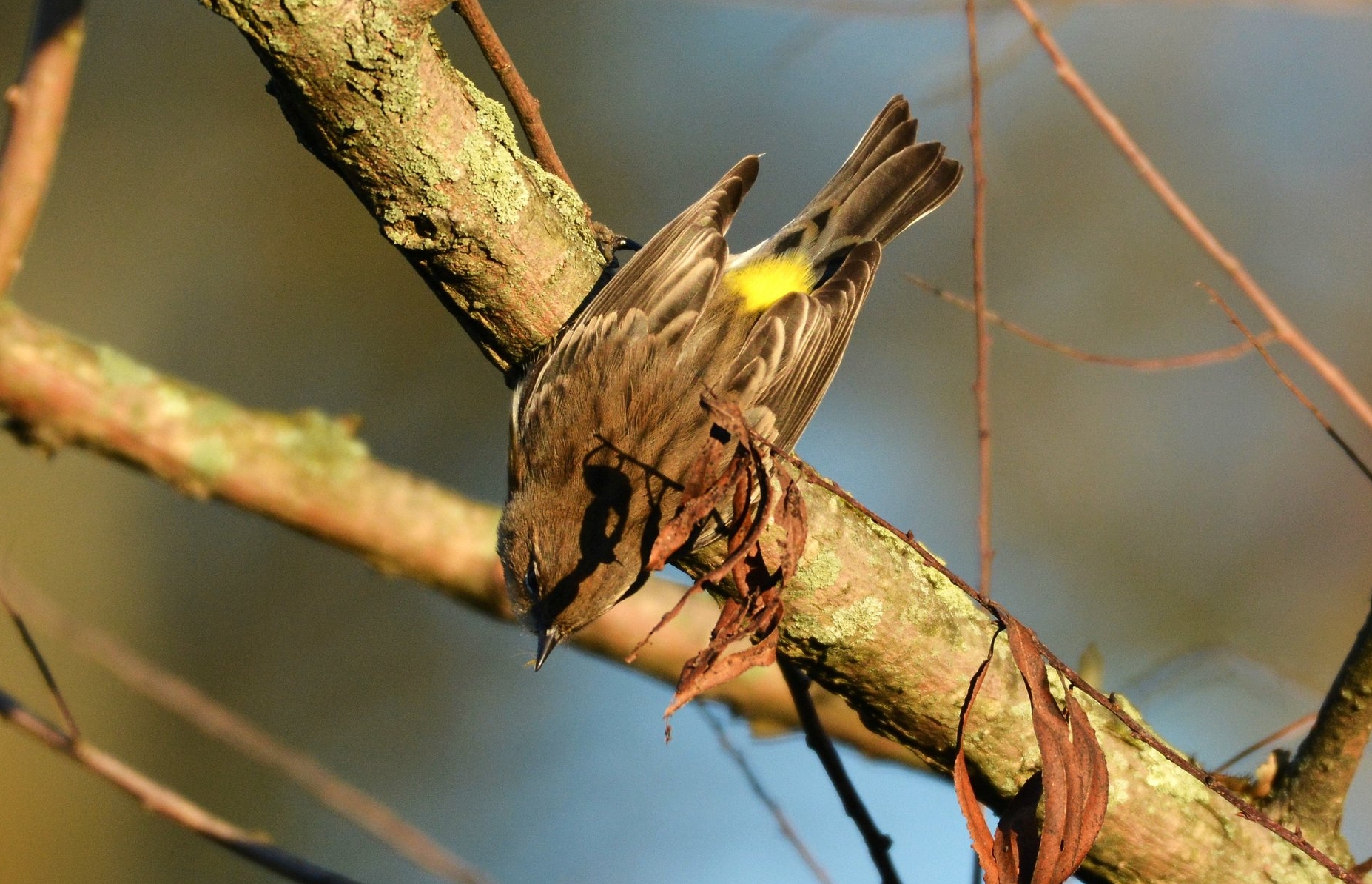

Spotting several Yellow-Rumped Warblers (Setophaga coronate) feeding on insects and berries he captured a few of the “Eastern Myrtle Warblers” that are common to Maryland with their telltale white throat. Yellow-rumps breed throughout Canada and Alaska and overwinter from Maryland into Central America. They are common spring and fall migrants, but uncommon to rare in the winter in Maryland. As they pass through twice each year, they are found in every County, but more commonly on the eastern shore, as they are able to digest the wax of bayberry, and also like wax myrtle, eastern red cedar and poison ivy berries.
Keep an eye out for these migrating birds when spring rolls in again. One of the best ways to observe them is to listen for their “contact call” that they constantly chirp in order to keep the flock together.


On Saturday, April 2, Will Saffell of ESA led a group of volunteers to remove trash and invasive species at the headwaters of Church Creek at the Annapolis Harbour Center. ESA designed the newly constructed stream restoration project for the South River Federation which will improve water quality and enhance over 1,500 linear feet of stream channel and over 5 acres forested wetland habitat. Despite rainy conditions, nearly 40 volunteers came out to donate their time to help in the annual Project Clean Stream event. Through this effort, a significant amount of trash and invasive plants were removed, which will enhance aquatic and riparian habitat in the valley, as well as survivorship of the native trees and shrubs that will be planted as part of the restoration effort. Through professional and volunteer efforts, ESA is proud to support the South River Federation in their mission to protect and restore the South River and its watershed.


We are excited to welcome our newest team member, Brian Wolfe, to the ESA team! Originally from New Jersey, Brian moved to Annapolis, MD after completing graduate school.
Brian is a registered Landscape Architect with a Master's Degree in Landscape Architecture from Virginia Tech University. He completed his undergraduate studies in Environmental Resource Management, with a minor in Wildlife and Fisheries Science at Penn State University. Brian is LEED certified and previously worked for civil engineering firms in Maryland, and also for the Maryland Department of the Environment in the Wetlands and Waterways Program. Brian is excited to apply his broad experience exclusively to the field of Natural Resource Management.
In his free time, you can find Brian recreating outdoors, pursuing many activities from running to kayaking to rock climbing. He is an active member, volunteer, and former President of the Annapolis Junior Chamber of Commerce.
If Brian could be any animal, he would be a wolf(e). He comments: "I know this sounds cliché, (especially given my name) but to me, they epitomize what it is to be free and I appreciate their social pack mentality.” -- a true sign that he will fit in very well at ESA.
We are very pleased and excited to add Brian’s enthusiasm, energy, and talents to our team.
According to the USGS National Wildlife Health Center, white-nose syndrome (WNS) is an emergent disease of hibernating bats that has spread from the northeastern to the central United States at an alarming rate. Consequently, measures have been taken to impede this progression and data was collected to determine locations of infected bats.
U.S. FWS Northern Long-Eared Bat County Restrictions Map (Click on image to enlarge.)
The final 4(d) Rule of the Endangered Species Act for the federally threatened northern long-eared bat went into effect on Tuesday, February 16, 2016. Per the U.S. Fish and Wildlife (FWS) Annapolis Field Office, the only known Maryland hibernacula occur within Garrett, Allegany and Washington counties. Consequently, for projects within these counties coordination with the FWS will be necessary to determine restrictions or if any additional surveys are needed. For all other Maryland counties no coordination is necessary as no roost sites are known/confirmed.
The above map shows the three WNS infected Maryland counties in a maroon color. However, these locations are subject to change as new data is collected.
ESA has extensive experience conducting surveys for and coordinating with federal and state regulatory agencies regarding endangered species such as bats, amphipods, bald eagle, swamp pink, small-whorled pogonia, and sensitive joint-vetch. Please feel free to contact us for further details.
ESA moved from Annapolis to Crofton, MD.

Our phone number is the same, but please note our new address:
2141 Priest Bridge Drive, Suite 1, Crofton, MD 21114
We look forward to serving you from our new location.
The Chesapeake Bay Trust is a nonprofit grant-making organization dedicated to improving the Chesapeake Bay and its rivers through environmental education, community outreach, and local watershed restoration. Since its inception the Trust has awarded $70 million in grants and engaged numerous citizen stewards in projects that have had a measurable impact on the Chesapeake Bay and its tributaries.
The Trust receives approximately $5 million in contributions annually and reinvests those dollars through a variety of grant programs in community-led projects.
The Trust asked Mark Burchick of ESA, Inc. to participate in their 2016 Outreach and Restoration Grant Program, by being on the CBT review board. Along with others, Mr. Burchick helped to prioritize, rank, and score numerous applications to the grant program. It was the board’s desire to include judges who have a technical background in applied ecology, specializing in ecological restoration, thereby better understanding the merits of the applications and if their goals and objectives could be realized through the proposed restoration designs.
It was an honor for Mark to participate in the board of review, and his contributions were well received.
December 12, 2015
ESA took advantage of a rare mid-70s degree December day by going on a company fishing trip out of St. Jerome Creek in Ridge, St. Mary’s County, Maryland. Navigating past Point Lookout to the mouth of the Potomac River, a few of ESA's employees spent the beautiful day fishing.
ESA caught nine keeper striped bass with ESA's largest fish of the day being 31-inches. All in all a great way to enjoy the Bay we strive to protect.
November 13, 2015

A photo-monitoring shot of a Delmarva Fox Squrriel conducted by ESA
After nearly a half century of being on the federal endangered species list, the U.S. Fish and Wildlife Service announced the Delmarva Fox Squirrel (DFS) is no longer at risk of extinction. For many years their habitat was compromised and therefore stricter rules were implemented to protect them.
ESA played a part in protecting the Delmarva Fox Squirrel by performing DFS surveys, both trapping and photo-monitoring, for several Maryland eastern shore clients. Additional efforts were made by the USFWS by translocating the squirrels to establish new populations, closing the targeted hunting season, and protecting large forest areas for habitat. Since the issuance of the endangered listing, the squirrel's population has increased to over 20,000 squirrels and now covers approximately 28 percent of the Delmarva Peninsula.
If you are interested in trying to spot the de-listed Delmarva Fox Squirrel check out the Blackwater (Maryland), Chincoteague (Virginia), and Prime Hook (Delaware) national wildlife refuges.
While the DFS is no longer endangered, ESA has extensive experience conducting surveys for and coordinating with federal and state regulatory agencies regarding other endangered species such as amphipods, bald eagle, swamp pink, small-whorled pogonia, and sensitive joint-vetch. Please feel free to contact us for further details.
August 27, 2015
ESA had the honor to work with the South River Federation to install a living shoreline in memory of our founder Kevin Kelly. The team worked together to install plantings along a previously dilapidated shoreline and in an adjacent rain garden within the Annapolis Hillsmere Community. Kevin had worked within Hillsmere to address erosion concerns and determined that the beach in question was actually aggrading. ESA made recommendations on how to capture the aggradation and these design parameters were implemented. Consequently, when the South River Federation approached ESA with this particular site in mind to honor Kevin, ESA jumped at the chance. It was beautiful summer day to honor and memorialize our Founder and dear friend.







Kevin and Debra Kelly founded ESA as an environmental consulting firm focused on wetland and forest delineation services in 1989. Thanks to Kevin’s charisma and technical skills and Debra’s business background, the small firm quickly expanded beyond its original scope and developed a broad client base and diverse portfolio. Many of these original clients still work with ESA, demonstrating the exemplary service Kevin and Debra provided from the start.
Kevin wasn't a typical businessman. He felt most at ease in the mountains with his backpack, friends, and dog. His philosophy in business was "work to live", not "live to work", and he prioritized time for family, friends, and exploring other passions. To his employees, Kevin was a friend and mentor, and his unique business approach led many employees to stay with the company for years.
Kevin passed away on December 9th, 2014. Although he left his body, Kevin lives on through Debra, his daughters, his friends, and ESA. In 2015, Debra generously gifted ESA to its core team members, all of whom have been with the company for more than ten years. The new principals are honored to carry on Kevin & Debra’s legacy as ESA continues to grow and thrive.
“A bad day in the field is better than a good day in the office. ”